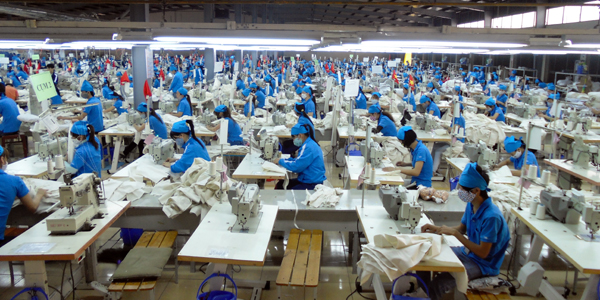
[8 April 2016] — After a search for suitors that lasted several months the Viet Nam National Textile and Garment Group (Vinatex) finally identified two of them — Vingroup and Vietnam Investment Development Group. But Vinatex's quest for strategic shareholders has not come to a happy conclusion since they are said to be not what the company had expected: both are property companies.
This has sparked off a debate about State-owned enterprises (SOEs)'s strategic shareholders in recent times.

Vinatex, to equitise, has to offer 120 million shares or 24 per cent of its stake to strategic investors, and nearly 122 million shares in its initial public offering (IPO).
In its search for strategic shareholders, Vinatex's criteria were that the parties should be in the same line of business, possess solid management capabilities and knowledge about the apparel market, and be able to provide financial and technical support.
A particular focus was on financial resources, a strong name in the industry, and willingness to help develop business strategies in the short term and respect and promote Vinatex's traditional values.
Starting in late 2012, and especially last year, Vinatex held talks with many large companies, mainly in the apparel sector.
But for many months it was unable to find partners that fulfilled its criteria.
Finally this month the group decided to sell 14 per cent to VID Group and 10 per cent to Vingroup.
Many other major SOEs are faced with a similar situation in their search for strategic partners.
At its annual shareholders meeting, the bosses of Petro Viet Nam Gas Corporation (PVGAS) revealed that the company was looking for strategic shareholders to carry out its equisation plan, under which the Government's 97 per cent stake would be pared to 75 per cent.
PVGAS is keen on foreign investors with plenty of expertise and experience in the gas industry, who could help grow the company.
It has to yet to identify suitable partners.
Out of the six major airlines in Southeast Asia, only Vietnam Airlines is unlisted. The company is in the process of equitising, and plans to make an IPO in November.
But airlines are not very attractive since aviation is a capital-intensive, low-profit industry. So Vietnam Airlines is unlikely to find it easy to attract strategic shareholders.
Where does the problem lie for SOEs?
To address the problem, the group plans to invest upstream in cotton growing, spinning, and dyeing.
But it is not a straightforward proposition since this requires large investments and the payback takes long.
Meanwhile, Vinatex is unable to sell itself to potential investors as a value proposition.
As for Vietnam Airlines, analysts warn that it will have difficulty in finding strategic partners for a different reason — the Government's diktat that it can sell only 25 per cent of its shares, a figure that will not be attractive to investors.
Besides, in its case the old chestnut about airlines is true – while the company was valued at $2.74 billion, its net profit in the first quarter was only around $20 million.
There are other procedural difficulties too.
SOEs have just a few months to complete the task of equitisation while strategic investors often take a year or more to do due diligence and thoroughly study a target company. And then they need to touch base with executives at the company to ensure things will work smoothly after the deal is done.
Yet another problem is that the valuation of SOEs for equitisation is neither transparent nor professional.
Many SOE bosses are apprehensive that they would end up losing some of their vast powers and so are not keen on selling a large enough percentage of shares that strategic investors will find attractive.
The enterprises are usually inexperienced in the task of identifying strategic shareholders, which causes further delays.
Those SOEs that manage to overcome all these problems only end up discovering that the capital markets have not yet recovered and investors are not exactly falling over themselves to buy their shares - (VNA).
 VN firms urged to focus on branding (12/03/2016)
VN firms urged to focus on branding (12/03/2016)
 VN targets high growth to 2020 (04/02/2016)
VN targets high growth to 2020 (04/02/2016)
 SMEs offered help, innovation pushed (08/01/2016)
SMEs offered help, innovation pushed (08/01/2016)
 More SBV policies to help SMEs (25/11/2015)
More SBV policies to help SMEs (25/11/2015)
 Workers unsure of future after retirement: survey (02/10/2015)
Workers unsure of future after retirement: survey (02/10/2015)
 SMEs must seek place in global supply networks (20/09/2015)
SMEs must seek place in global supply networks (20/09/2015)
 New criteria needed to classify SOEs (30/08/2015)
New criteria needed to classify SOEs (30/08/2015)
 e-Regulations likely to improve business (25/07/2015)
e-Regulations likely to improve business (25/07/2015)
 Transparency key to debt management (15/05/2015)
Transparency key to debt management (15/05/2015)
 National GDP likely to reach 6.5 per cent (05/04/2015)
National GDP likely to reach 6.5 per cent (05/04/2015)